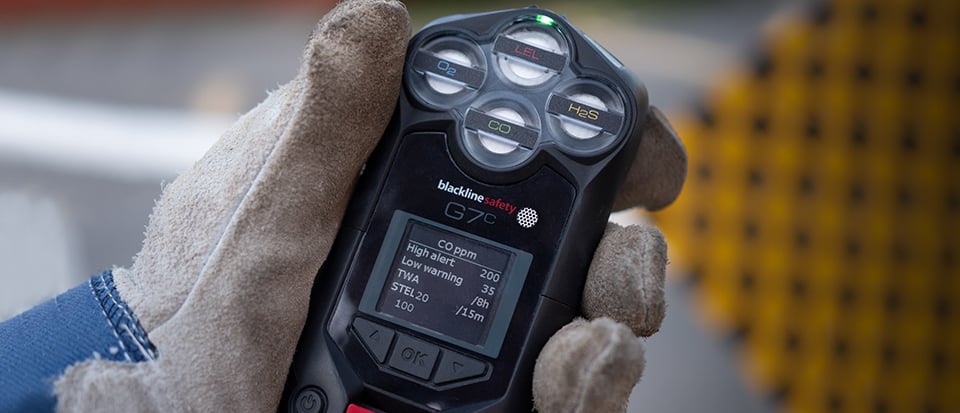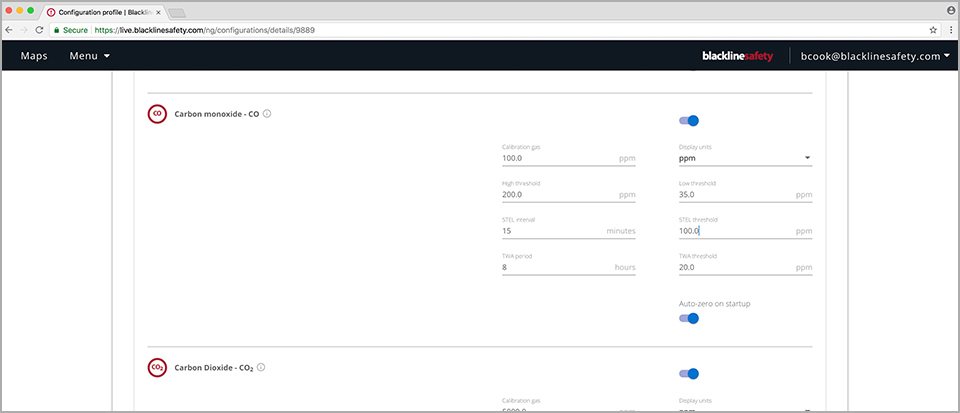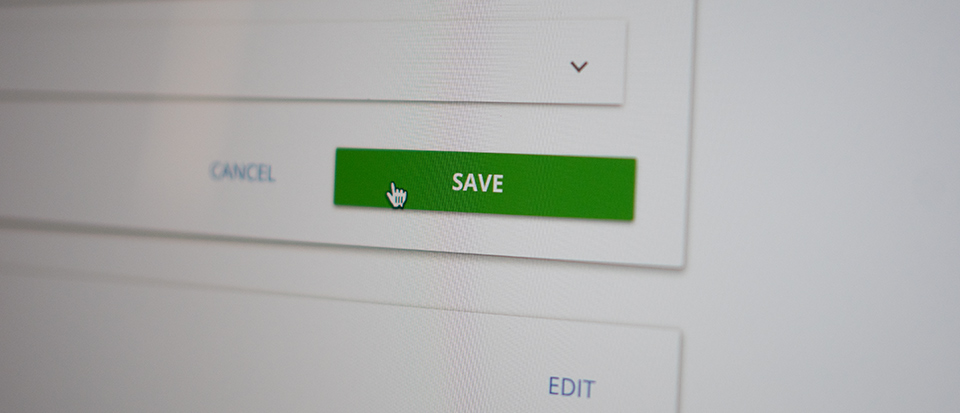Blackline Safety is a technology leader driving innovation in the industrial workforce through IoT (Internet of Things). With connected safety devices and predictive analytics, Blackline enables companies to drive towards zero safety incidents and improved operational performance. Blackline provides wearable devices, personal and area gas monitoring, cloud-connected software and data analytics to meet demanding safety challenges and enhance overall productivity for organizations with coverage in more than 100 countries. Armed with cellular and satellite connectivity, Blackline provides a lifeline to tens of thousands of people, having reported over 200 billion data-points and initiated over seven million emergency alerts. For more information, visit BlacklineSafety.com and connect with us on Facebook, Twitter, LinkedIn and Instagram.
Workplace Exposure Limits Have Changed — Are You Ready?
Blackline Safety, Leader in Connected Gas Detection & Lone Worker Safety
September 06, 2018
Future-proof your gas detection fleet with G7
We developed our award-winning G7 based on 10 years of connected safety innovation. Over this time there have been many changes in safety — changes that continue to challenge numerous industries. Most recently, last month’s updates to the UK’s Workplace Exposure Limits (WELs) changes the limits for a range of gases and establishes new limits for other gases that didn't have a WEL previously.
Download a free up-to-date copy of EH40/2005
Out with the old ...
Users of traditional gas detectors are all too familiar with the reconfiguring their instruments to accommodate new workplace exposure limits. This can mean considerable effort and downtime, recalling and reconfiguring each detector, one-by-one. Afterwards, gas detectors often go through an assessment step ensure to ensure that each monitor is in full compliance to regulations.
... In with the new

Our connected technology is different and far surpasses traditional gas detectors that burden businesses with manual compliance programs — plus, conventional detectors cannot call for help. Instead, they ask its user to get himself or herself to safety with a personal alarm.
From our new G7 Insight program that automates gas detection compliance to our real-time connectivity that can trigger an emergency response the moment an incident occurs, we have you and your teams covered. We like to refer to this a future-proofing your gas detection investment.
Automating changes to workplace exposure limits
G7 devices are never configured manually. In fact, you never need to touch a single G7 device at all. We automate this process within Blackline Live, our easy-to-use online software. G7 administrators create online configuration profiles that define the operating parameters for each team, defining the workplace exposure limits for each gas sensor and deciding on each setting to enable. Whenever a change is made, the Blackline Safety Network automatically and wirelessly configures every G7 device. If any G7 detector happens to be offline and not connected, it will download the new configuration the next time that it's online.

Sample scenario
Consider an example — a US-based oil company with field operations in Kazakhstan with 1,000 portable gas detectors in constant use. With G7, if the business needs to change their alarm level for H2S, a manager in Houston can press one button, and the entire fleet will update in the field a few seconds later.

ZERO DOWNTIME
Unlike conventional gas detection devices, with G7 there is no need to:
- Round up and return devices to the nearest service centre
- Provide an alternative gas detector for the user in order to eliminate downtime
- Reconfigure the devices, one at a time, via USB cable or connection to a docking station
- Audit each gas detector to ensure that all settings are correct
- Return the updated device to the user
Businesses are busier than ever — what's the cost and complexity to manage such an operation?
What are WELs and what has changed?
Workplace Exposure Limits (WELs) are British occupational exposure limits that are set to protect workers from exposure to toxic substances, either over a short-term — a short-term exposure limit (STEL, 15 minutes) or long-term — a time-weighted average (TWA, 8 hours).
Directive 2017/164/EU documents the updated Indicative Occupational Exposure Limit Values (IOELVs) for a range of chemical substances, providing new limits and protecting workers from the effects of exposure to hazardous substances. This Directive was transposed by all European Union (EU) Member States in August 2018 and the UK Health & Safety Executive (HSE) indicated that the new and revised statutory thresholds should be implemented in the UK in line with the new IOELVs.
Of nearly 500 hazardous substances listed, limits have been changed or introduced for 31 of them, including some of the most commonly-encountered gases in a number of industries, as illustrated in the table below. WELs for SO2, NO2 and SO2 were removed from EH40 in the past and have been reintroduced to the list.
Carbon Monoxide (CO)
[table id=3 /]
Sulphur Dioxide (SO2)
[table id=4 /]
Hydrogen Cyanide (HCN)
[table id=5 /]
Nitrogen Dioxide (NO2)
[table id=4 /]
With the award-winning G7 and Blackline Live all of this is easily managed remotely. Any required updates can be executed within seconds with no additional costs, leaving no room for human error and reducing your downtime to zero.
HOW WE CAN HELP?
Let us know if you have any questions on how our new confined space gas monitor and leak-check system can streamline and simplify your gas detection program.
Get In Touch
Let’s start a discussion about your safety challenges and needs.
Related Blog Posts
3 Creative Applications of Blackline Safety Technology
July 29, 2025
Designed for Safety. Adapted with Ingenuity. Blackline devices are built for tough jobs—gas detection, lone worker monitoring, real-time emergency...
Real-Life Incident: Superior Fire Department Drug Bust
July 28, 2025
G7 helpsHAZMATteam safely navigate Wisconsin's largest DMT lab When Superior Wisconsin Fire Department received the call, the situation was...
Award-Winning Industrial Design: EXO 8 Honored at Red Dot Gala in Germany
July 17, 2025
On July 8, I had the privilege of representing Blackline Safety at the Red Dot Awards gala in Essen, Germany—an evening that celebrates some of the...


